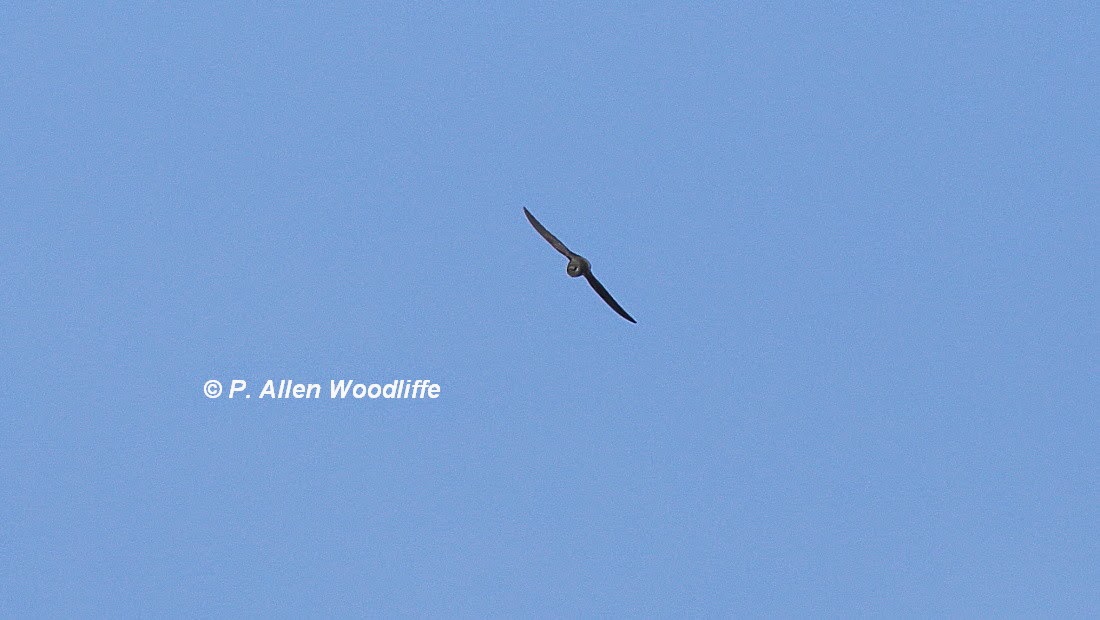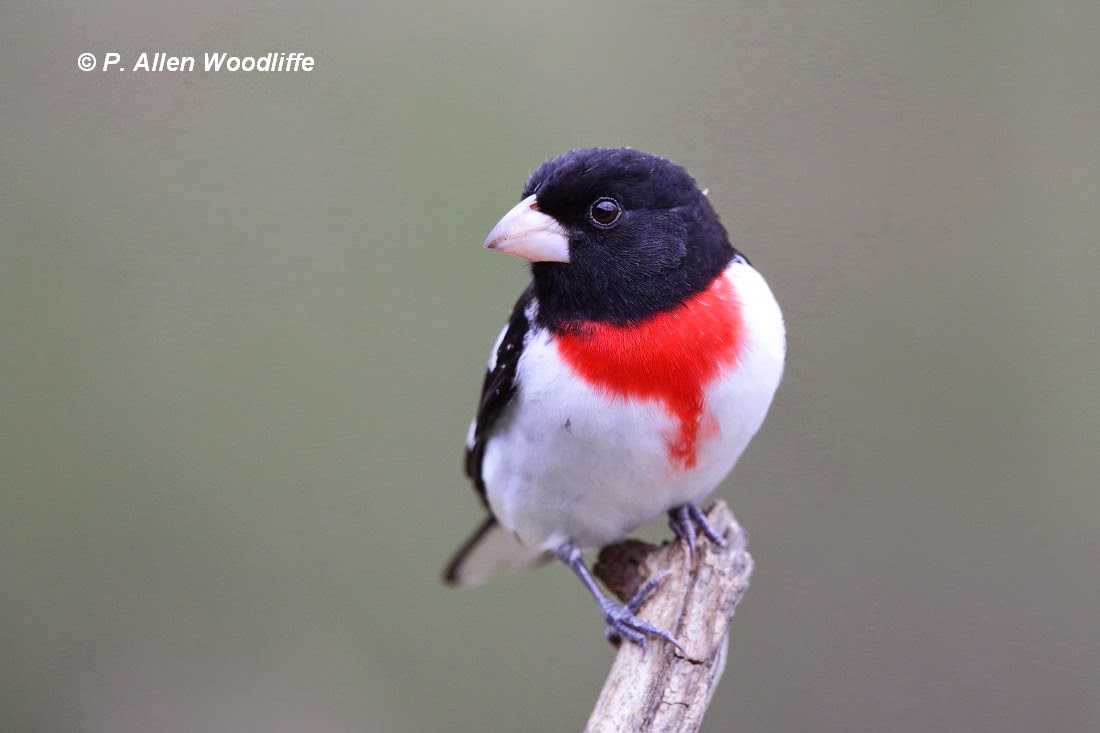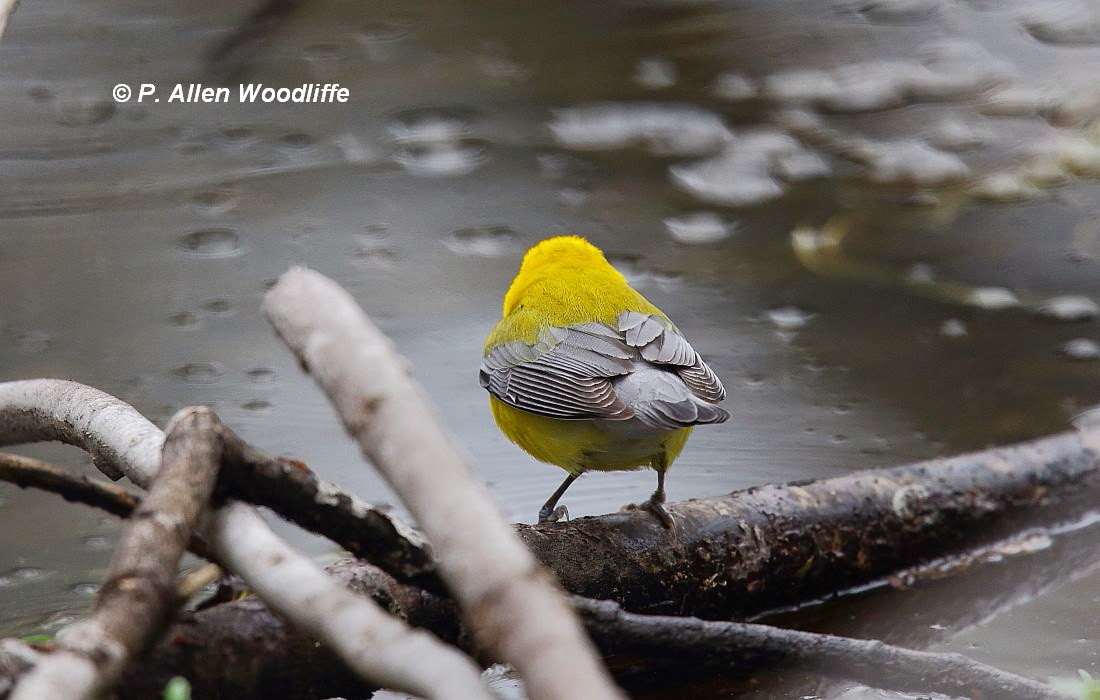The last few days have been hit and miss for me, at least with respect to getting out as much as I would like, and catching up to some of the rarer bird species. The weather has played a bit of havoc with my time out, not surprisingly. But there have been some colourful ones around to enjoy when I have been out, and a good diversity of warblers.
On one of the sunnier days lately I had an adult Bald Eagle float overhead on several occasions, giving me some great photo ops against the bright blue sky.
At about the same time, but higher up, I noticed some Chimney Swifts flying overhead. They are quite a bit smaller, of course, than eagles and with their erratic flight, are hard to get to stay in the viewfinder! But I managed a couple of distant keeper shots, showing a head-on view and a side view of these little birds that have been described as a 'cigar with wings'.


Chimney Swifts are a declining species. Before European settlement, they would have nested in the open, hollow trunks of an old tree. On occasion when I have been roaming the more remote parts of Rondeau and come across a big old hollow maple tree, I have actually seen Chimney Swifts entering and exiting such a tree. With settlement and the loss of old growth forests and those big hollow trees over the last century or more, the birds adapted to brick chimneys that were widespread in settlements. But now even that is coming to an end, as fewer people heat with firewood that require such chimneys, and industrial stacks are being closed off or demolished so that even those anthropogenic features are less and less available. The old chimney at the Chatham jail, and one of the large chimneys at the U of Guelph campus at Ridgetown are a couple of the sites in the area where Chimney Swifts may either be nesting, or gathering during their late summer roosting prior to migrating south. As they gather in the late summer, sometimes more than a hundred swifts can be seen entering a single stack just before dark, and is a fascinating scene to watch.
But the sunny skies didn't last too long, and the skies poured out lots of precipitation!
The influx of colourful bird migrants has been very welcome in the last few days, with hotspots varying to some degree depending on the day and the wind direction. Some of the ones I've been able to capture are as follows:
 |
| Baltimore Oriole |
 |
| Blackburnian Warbler |
 |
| Chestnut-sided Warbler |
 |
| Magnolia Warbler |
 |
| Rose-breasted Grosbeak |
 |
| Scarlet Tanager |
 |
| Yellow Warbler |
Most of the warblers that are around, and that I managed to get shots of and posted here, are males. This indicated that the migration still has a long way to go, as typically the females are slightly later in arriving.
A less brightly coloured warbler is Northern Waterthrush, shown below.

A prize species on any birder's list is Prothonotary Warbler. This species is endangered in Ontario and Canada, with on average fewer than a dozen pairs nesting in Ontario in recent years. It seems that 2014 shows a little more promise than last year. In 2013 there were only about 3-4 sightings at Rondeau during the spring, and no actual nesting pairs known. Of course with the ~70 kilometres of linear slough habitat for them to choose from at Rondeau, it is quite possible that some did nest but went undetected. So far this year more have been reported in some of their traditional nesting areas; hopefully that bodes well for some reproduction. I got the following shot along the Tuliptree Trail, right close by the designated spot on the trail where they are most apt to be seen. With a couple of nesting boxes close by, it is often an attraction for the males when they arrive. Hopefully an obliging female arrives soon. Unfortunately this particular bird didn't want to show me its best side, so the only shots I got were like this.

For a much better photo, showing the magnificence of this bird, note the photo at the top of this blog, which I photographed at a natural cavity in the early 1980s. The Prothonotary Warbler (PROW) is undoubtedly my favourite warbler, and perhaps my favourite bird. I have had the pleasure of photographing this species on numerous occasions during the decade or more that I was the park naturalist, and they were always in a natural cavity. Back then, in the 1970s and early 1980s, while the species was still relatively rare, it was much more common than it is today. Rondeau has always been the hot spot for it in Canada, due to the great amount of habitat. In fact the first confirmed nest record for PROW in Canada was at Rondeau back in the early 1930s. It nests in cavities made by other birds, usually woodpeckers, that range from about 1 metre to 4 metres above the water. It rarely, but occasionally, nests in such cavities over the land. On a couple of occasions I did some basic surveys for them in the early 1980s, and both times I found that there were 20-24 singing males (indicating the possibility of a mated pair) or an actual mated pair recorded. And that was only covering no more than half of their available habitat, so the population could have been double that. Little did I know at the time that the PROW would become so endangered, relying almost entirely on nest boxes as nesting sites.
Other birds captured these last few days on digital film include:
 |
| Eastern Kingbird |
 |
| Veery |
There have been a lot of thrushes around lately, including Veery which on occasion will nest at Rondeau. Several of the trails were loaded with thrushes, including Swainson's, Wood, an occasional Gray-cheeked Thrush and Veery. And flycatchers have been abundant as well but very few have been singing.
 |
| Yellow-bellied Flycatcher |
Some of the little
Empidonax flycatchers, such as this Yellow-bellied one, are challenging to tell apart unless they are vocalizing. This one wasn't singing, but fortunately the Yellow-bellied is more distinctive than some of the others members.

















A great post Allen, you had some great sightings all captured well with your digital film. I always take a second look at your PROW image that you use as your blog image and now I know the story on how it was created. I was fortunate to see a PROW last week in Pelee too.
ReplyDelete